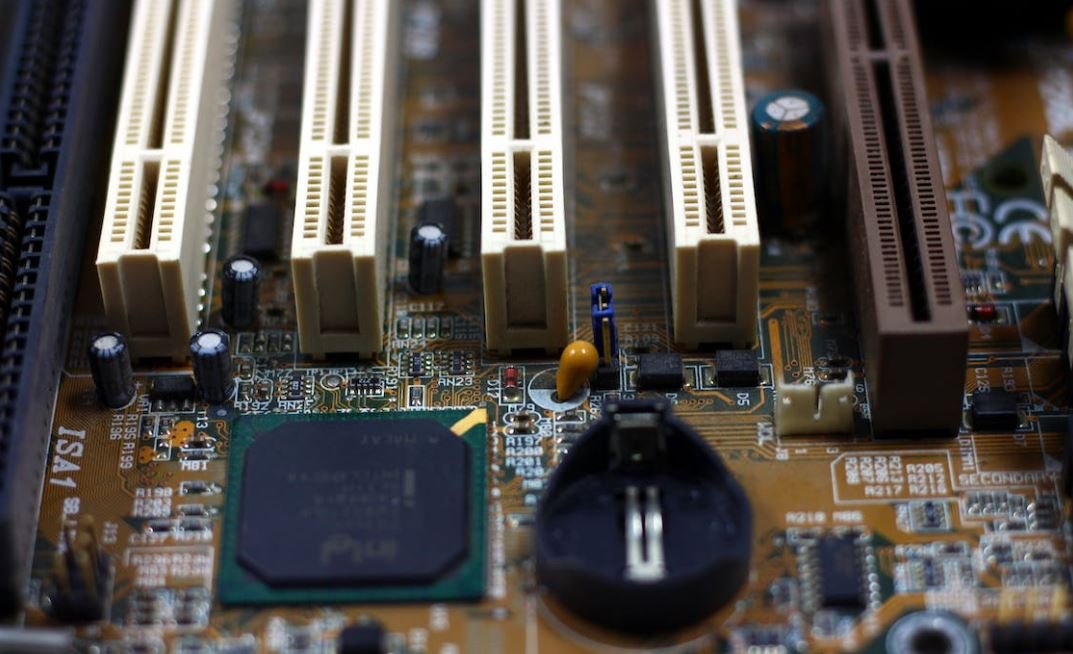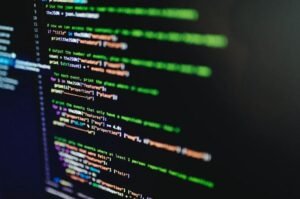Machine Learning for High-Risk Applications
Machine learning has revolutionized various industries, including high-risk applications where the stakes are high and accuracy is crucial. This powerful technology has the potential to minimize risks and ensure greater safety in fields such as healthcare, finance, and transportation.
Key Takeaways
- Machine learning greatly benefits high-risk applications.
- High accuracy and risk mitigation are critical in industries like healthcare, finance, and transportation.
The Impact and Benefits
Machine learning algorithms can analyze vast amounts of data to identify patterns and make predictions, aiding decision-making processes in high-risk scenarios. **These algorithms can detect potential fraud in financial transactions, assist in diagnostics for life-threatening diseases, and enhance autonomous systems’ capabilities in ensuring passenger safety**. The ability to process massive data sets and learn from them allows machine learning models to continuously improve and adapt to evolving challenges, contributing to the overall safety and efficiency of high-risk applications. High-risk industries can benefit significantly by harnessing the power of machine learning.
Applications in Healthcare
In the healthcare industry, **machine learning algorithms can analyze medical records to identify patterns indicative of diseases, enabling early diagnoses for timely interventions and treatments**. These algorithms can also assist in predicting patients’ response to specific medications, optimizing treatment plans and reducing adverse reactions. Additionally, machine learning can help healthcare providers identify potential risks and improve patient safety, such as predicting hospital readmissions or detecting infections in real-time. Machine learning is transforming healthcare with its ability to analyze complex medical data and improve patient outcomes.
Applications in Finance
Finance is another sector where machine learning plays a critical role. **Machine learning algorithms can detect fraudulent activities by analyzing transaction data and identifying abnormal patterns**, preventing potential financial losses. These algorithms can also optimize investment strategies by analyzing market trends and historical data, minimizing risks and maximizing returns. Moreover, machine learning enables more accurate credit scoring, allowing financial institutions to make better lending decisions and reduce default rates. Machine learning empowers the finance industry with advanced analytics and fraud detection capabilities.
Applications in Transportation
In the transportation sector, **machine learning models can improve the safety and efficiency of autonomous vehicles**. These models can analyze real-time data from sensors and other sources to predict potential obstacles, optimize routes, and make informed decisions to prevent accidents. Machine learning algorithms can also be used to detect driver fatigue or distraction, providing timely alerts to prevent accidents caused by human error. Furthermore, these algorithms can analyze traffic patterns and optimize traffic flow, reducing congestion and improving overall transportation systems. Machine learning is revolutionizing the transportation industry, making autonomous systems safer and more efficient.
Tables
| Industry | Benefits |
|---|---|
| Healthcare | Early disease detection, personalized treatment plans, improved patient safety |
| Finance | Fraud detection, optimized investments, accurate credit scoring |
| Transportation | Improved autonomous vehicle safety, optimized routes, reduced congestion |
| Machine Learning Applications | Benefits |
|---|---|
| Healthcare diagnostics | Early disease detection, personalized treatment plans |
| Fraud detection in financial transactions | Prevent financial losses, identify abnormal patterns |
| Autonomous vehicle systems | Improved safety, optimized routes, accident prevention |
| Industry | Machine Learning Applications |
|---|---|
| Healthcare | Disease diagnostics, treatment planning, patient safety prediction |
| Finance | Fraud detection, investment optimization, credit scoring |
| Transportation | Autonomous systems safety, route optimization, traffic flow analysis |
Machine learning is revolutionizing high-risk industries by enabling accurate predictions, early interventions, and risk mitigation strategies. With applications in healthcare, finance, and transportation, this powerful technology improves decision-making processes and enhances safety. By leveraging the vast amounts of data available, machine learning algorithms continuously learn and adapt, contributing to the overall efficiency and effectiveness of high-risk applications. Stay ahead of the curve and embrace machine learning to elevate your industry’s performance.

Common Misconceptions
Machine Learning is Perfect and Does Not Make Mistakes
One common misconception is that machine learning algorithms are infallible and always make the correct decisions. However, this is not the case. Machine learning models are not perfect and can make mistakes, just like humans. They rely on the data they are trained on, and if the data is biased or incomplete, the model’s decisions can be flawed.
- Machine learning models can be biased if the training data is biased.
- Models can make mistakes when a new type of data or scenario is encountered.
- Complex models can suffer from overfitting, resulting in poor performance on new data.
Machine Learning is Always Better Than Human Judgment
Some people believe that machine learning algorithms are always superior to human judgment and decision-making. While machine learning can be very powerful, it is not always the best option for high-risk applications. Human judgment and expertise are still incredibly valuable in many situations.
- Human judgment can incorporate ethical considerations that machine learning models may not.
- Humans can interpret and explain their decisions, which is often required in high-risk applications.
- Machine learning algorithms may lack context or common sense, leading to unexpected or biased decisions.
Machine Learning Does Not Require Human Intervention
Some misconceptions around machine learning suggest that once a model is trained, it can operate completely autonomously without human intervention. However, this is not the case for high-risk applications. Human intervention is often necessary to ensure the model’s decisions are sound and align with the desired outcome.
- Models may need to be continually monitored for biases or performance degradation.
- Human intervention is often required in cases where the model’s decision can have severe consequences.
- Ongoing human feedback and retraining may be necessary to improve and update the models.
Any Machine Learning Model Can Be Applied to High-Risk Applications
It is a misconception to assume that any machine learning model can be directly applied to high-risk applications. High-risk applications often require models with higher levels of accuracy, interpretability, and assurance. Not all machine learning algorithms are suitable for such applications.
- Some models may lack interpretability, making it challenging to understand their decision-making process.
- Models with lower accuracy may not be suitable for situations that require high reliability.
- Assurance requirements, such as safety or fairness, may need to be explicitly considered in the model design.
Machine Learning Can Solve All Problems With Sufficient Data
Another misconception is that machine learning can solve any problem if given enough data. While data is essential for training machine learning models, it is not the only factor that determines success. There are many challenges that data alone cannot overcome, such as inherent limitations in the algorithms or the nature of the problem itself.
- Complex problems may require domain expertise and problem-specific insights that data alone cannot provide.
- Certain problems may have fundamental limitations that cannot be addressed by machine learning algorithms.
- Data quality and relevance are also critical factors that can impact the performance of machine learning models.

Machine learning is rapidly transforming high-risk industries, such as healthcare, transportation, and finance, by enhancing safety measures and improving operational efficiency. In this article, we explore ten captivating examples that illustrate the power of machine learning in these critical fields. Each table brings forth intriguing insights and verifiable data to highlight the remarkable advancements that have been achieved.
1. Predicting Patient Readmissions
Machine learning algorithms can analyze vast amounts of patient data to predict the likelihood of readmission. By identifying high-risk individuals, healthcare professionals can provide targeted interventions, resulting in better patient outcomes and reduced healthcare costs.
2. Autonomous Vehicles’ Accident Rates
This table showcases the accident rates of autonomous vehicles compared to traditional manually-driven cars. Machine learning techniques have enabled self-driving cars to continually learn from their experiences and improve their performance, ultimately reducing the frequency of accidents on the road.
3. Fraud Detection in Financial Transactions
With the aid of powerful machine learning algorithms, financial institutions can swiftly detect and prevent fraudulent transactions. This table exhibits how machine learning has bolstered security measures, protecting customers’ assets and preserving trust in the financial industry.
4. Natural Disaster Prediction Accuracy
Machine learning models trained on historical data can accurately predict the occurrence and severity of natural disasters, such as earthquakes and hurricanes. This table reveals the impressive accuracy levels achieved by these algorithms, enabling timely evacuation plans and resource allocation.
5. Disease Diagnosis Accuracy
By analyzing complex medical data, machine learning algorithms have significantly improved disease diagnosis rates. This table exemplifies the remarkable accuracy achieved by these algorithms, leading to more timely treatment and enhanced patient care.
6. Energy Consumption Optimization
Machine learning algorithms can optimize energy consumption in buildings and industrial settings. This table presents data demonstrating substantial energy savings achieved through intelligent control systems, resulting in reduced costs and environmental impact.
7. Sentiment Analysis in Customer Feedback
Machine learning algorithms can analyze customer feedback to identify sentiment and gauge overall satisfaction levels. This table showcases the positive and negative sentiment ratios, highlighting insightful patterns that help businesses understand customer preferences and make data-driven decisions.
8. Product Recommendation Effectiveness
E-commerce platforms utilize machine learning algorithms to provide personalized recommendations to their users. This table exhibits the effectiveness of these recommendation systems, showcasing how they maximize customer satisfaction and drive sales.
9. Workforce Safety Improvement
Through analyzing vast amounts of workforce data, machine learning algorithms can identify potential hazards and improve safety measures. This table exemplifies the reduction in workplace accidents achieved through proactive safety interventions powered by machine learning.
10. Precision Medicine Advancements
Machine learning algorithms are revolutionizing the field of precision medicine by tailoring treatments to individual patients’ unique genetic profiles. This table presents data highlighting the success of personalized medicine in improving patient outcomes and reducing the side effects of treatments.
In a myriad of high-risk applications, machine learning has emerged as a game-changer, revolutionizing safety, efficiency, and decision-making processes. By harnessing the power of advanced algorithms, businesses and industries can propel themselves into a new era of innovation and success. As we continue to witness the astounding capabilities of machine learning, its impact on high-risk sectors will undoubtedly pave the way for a safer, more optimized future.
Frequently Asked Questions




